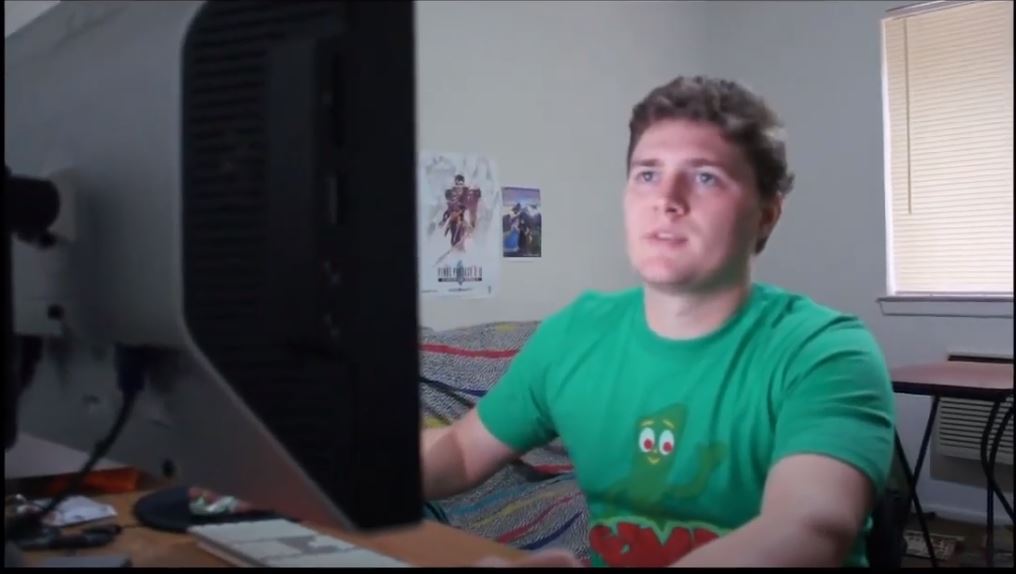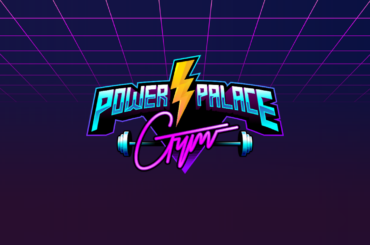My experience with YouTube stretches back all the way to its initial launch in 2005. I was among the first people to actively watch videos on the platform, and I created my own account in 2006 to publish my own videos, too. So as a long time user of the platform I have experienced all of the changes which had occurred on the platform, and seen how it changed over time.
There have been times I had the opportunity to meet with YouTube employees and provide direct feedback. For example in 2016 I was one of the invitees to a YouTube Partner Meetup at their offices, where I was shown a preview of how Google+ was going to become fully integrated into YouTube. I recall being very adamant that it was a bad idea, as I saw it was going to cause very predictable problems (the usage of pornographic and harassing ASCII art in the comments section was an obvious one but also on the channel management side, the integration added many unnecessary steps just to do basic things like communicate directly with subscribers).
But before that, I responded to one of YouTube’s requests to provide feedback and product ideas in the 4th quarter of 2010.
I actually recorded myself talking about what my suggestions were, and I think re-reviewing this video really demonstrates the state YouTube was in back then and where my mind was already heading toward the business end of this industry. I was losing interest in being a creator alone, and thinking about things more professionally.
Let’s go over some of the suggestions I made and how things are today:
#1: Improvements to Google Analytics for showing revenue:
Way back in the day YouTube only showed you an estimate of how much your channel earned overall. The actual report for the exact amount you’d earned would only be available in Google Adsense, which is how creators were (and still are) paid advertising revenue. But this report on AdSense didn’t give you a break down of how much each individual video earned.
This feature was necessary in my opinion to not only be able to calculate ROI on each video, but also needed to convince investors that investing into content had clear and demonstrative ROIs.
Looking at things today, this feature now exists in YouTube although for many years YT still only showed you an estimate of earnings, with the final report not available in the analytics dashboard but required a downloadable excel sheet. The problem is this system didn’t take into consideration the operation of YouTube networks, so the download from a CMS account just gave you (usually) millions of entries per line of each video and how much that video earned, with nothing specific to say what channel that video was associated with.
This lazy method of handling the earnings data was a major point of frustration for me when operating an MCN. I (and every other MCN operator) had to create a custom dashboard for the custom partners payout system, in order to develop a payment which could match video IDs to channel IDs in order to determine how much money to pay each partner channel. We needed every channel partner to integrate their channel via the YouTube Developer API into our dashboard in order to sync up their video IDs to this report, as they are totally disconnected with one another.
I imagine it probably still works that way because (in my opinion) YouTube has a tendency to be extremely lazy with building useful tools for MCNs, so we end up having to invent workarounds to solve very basic problems.
It is due to my experience with the way revenue analytics works on YouTube that I had our Zenither analytics dashboard work completely differently, and be designed to make it very easy for channel owners to track individual earnings of episodes and even assign revenue share percentages internally in the analytics, so that a downloadable spreadsheet can be obtained that tells the channel owner exactly how much money to pay licensees of the content they host on their channels.
#2: Click-bombing
For a long time it was possible for trolls and malicious competitors to your channel to use software to constantly reload your videos and spam clicks on your ads. This would make your ad revenue skyrockets, because ads are largely paid when a user engages with that ad on your video. The point of doing this, however, was not to help a creator but to trigger AdSense to ban your account.
Google had implemented some AI that would automatically shut down an AdSense account if there was any unusual clicking activity from the same IP addresses, under the assumption the only person who would be motivated to engage in click fraud is the owner of that AdSense account. So as a matter of course your AdSense would be shut down if that activity was detected. What Google failed to understand is by making the system work this way it means that someone’s competitors can kill their channel monetization by simply engaging in click fraud, and this frequently occurred. While very large YouTube creators often had ways to communicate this issue to YouTube when they noticed the spikes in clickfraud activity, smaller creators usually didn’t even know what was happening. The partner forums were often filled with people frustrated and confused about why their Adsense was canceled, with virtuous creators accusing them of engaging in fraud and telling them they had “only themselves to blame” when in reality there was a widespread amount of trolling and harassment by a small but active community of trolls on YouTube to demonetize creators.
I myself experienced this type of click bombing fraud on a channel but because I actually got sent Skype logs of the group who was doing it, I was warned ahead of time and was able to contact Google to let them know I was not at fault. I ended up turning off monetization on my videos for several months as a result, because they would only give up if they thought I had lost monetization. By then I had lost a lot of revenue and YouTube was not promoting my videos as much, and it basically killed my channel in such a way that channel never recovered from it.
When building Zenither I designed an ad system that would make this kind of fraud impossible to do in the first place.
#3: Don’t show me ads when I watch my own content
This kind of falls into click fraud, too. Sometimes YouTube penalized creators for watching their own videos. Sometimes you wanted to see how well annotations and other interactive elements were placed in the live public facing video, and if ads showed too much then Google would penalize you, too.
Zenither’s analytics are smart enough to not count the publisher’s own logged in account as views. Really simple.
#4: Being able to see which viewers are the 100th, 500th, millionth, etc subscriber to a channel.
This goes into making contests, similar to what businesses do when they celebrate someone for being the 100th customer, or something. It is a basic promotional concept that I thought would be a useful feature to offer a prize to the 100,000th subscriber or something.
Zenither does not have that feature yet, but it’s on the table to implement features for channels to run contests like this without breaking privacy laws.
#5: Fix sending private messages to users.
There was a bug that made sending mass messages to your subscribers impossible to use, because YouTube never removed deleted accounts from your list of users subscribed to your channel. This meant if any users didn’t exist anymore you’d get an error saying you cannot send the message….so you’d end up having to message every user individually which was a huge waste of time BUT was necessary as part of community engagement at the time, especially with the poor way subscriber feeds worked.
YouTube ended up removing the ability to send messages to subscribers completely instead of improving it. Instead after the Google+ integration we had the ability to add channel subscribers to special Fan Circles that we could send them a message through, but they would have to see it mostly on Google+ or alternatively, maybe the message might show on the subscription activity feed.
It was less effective this way and one of the reasons YouTube creators hated Google+.
Anyway, Zenither doesn’t have the ability to send private messages to subscribers through the service but it does allow them to build a mailing list of their subscribers, which is even better.
#6: Tell users specifically why videos were rejected for monetization
Running a gaming channel sucked on YouTube outside of an MCN where the MCN operators reviewed the videos for monetization approval. Google often outsourced their video monetization reviewing to third parties who would often reject videos without any real explanation of what they thought was wrong, and in the case of gaming videos generally did not understand game reviews fell under fair usage. Sometimes I could get an appeal and then show I had received permission from the PR team of a publisher who had sent me a review copy of the game and permission to monetize it, but this only worked half the time.
It was a major reason why people joined MCNs at the time, to get away from the poorly trained video review team YouTube outsourced the task to.
Zenither doesn’t have this problem because we don’t review videos for monetization, and we instead screen our publishers to ensure they are legitimate and professional companies. If there are copyright issues despite this process we deal with it on a case by case basis.
#7: Give Series tab to all Partners.
there was a very useful feature back in the day called Series, and then re-labeled as Shows, and it gave an ability to organize content better than playlists. It was only given to select few partners, mostly those in MCNs. Eventually it was retired and doesn’t exist anymore now.
Zenither has built in Show functionality similar to that old Series tab, which makes organizing content much easier and allows special meta data to make Search more effective. Features such as auto scheduling utilize the order of a Series episode lineup to handle tasks like programming stations, too.
#8: Fix bugs with Promoted videos
At the time YouTube was running ads and heavily encouraging creators to promote their own videos via AdWords to build an audience, but we were getting way ripped off. There would often be a major discrepancy between how many clicks you pay for and how many views you actually got from that video, which showed that companies serving AdWords videos were gaming the system to earn money for videos that nobody was actually watching.
Zenither does not have the ability to pay to promote your shows and instead we focus on tools to make it easier for audiences to be built for a channel. We should be paying the content owners, not the other way around.
#9: Ability to ask a questionnaire and make polls
This again is a useful promotion feature as well as a tool for measurement of audience feedback.
We don’t have polling in Zenither yet, but it is on the list of features to add in the future to help channels with engagement and audience measurement.
#10: Ability to search for videos by length
YouTube did implement a way to do this under advance features, and I use it a lot, actually.
Zenither does not have this feature yet but it’s a planned update.
#11: Add more genres, like Children’s content genre.
YouTube has had content genres but there is limited ability to search by genre, so mostly they only mattered for top lists. There was never a specific category for just Children’s content, either.
Zenither has many categories for searching content, including Children’s content. We also have color coded bars on episodes to show what category it belongs to (example green for gaming / sports, red for movies, yellow for children’s programming, etc)
#12: Ability to save videos for play later
YouTube did implement this feature as the ‘Watch later’ feature.
Zenither doesn’t have this feature yet but it can be added later. We mostly address the reason I wanted this feature (so I can lean back on a couch and watch TV without having to click on a new video every 5 to 10 minutes) with our channel timeline that allows for a more traditional TV watch experience.
#13: See more demographic data
YouTube has never really improved the demographics data in any meaningful way. For a brief time you could see what other kinds of channels they were interested in but this feature went away,
Zenither by contrast gives full demographic data to channel owners so they can make data driven decisions in programming and get the best price during advertising negotiations for sponsorships and ad inventory pre-sells.
#14: Ability to issue custom badges to users.
This was never implemented by YouTube, even though it has obvious advantages. Gamification is very useful for promoting engagement with content and rewarding loyalty.
Zenither has plans for implementing this feature in the future as part of the viewable user profile features.
#15: Being able to see, as the channel owner, who is advertising on your content
This is the biggest frustration — channel owners have no real way to know who is advertising on our content and if those ads are friendly with the brands we are building.
Zenither addresses this by allowing channel owners to see what ads have been bought against their ad inventory, and even reject them if they want to. They can also ban an agency from advertising on their content, too.
Likewise agencies can see what content their ads will appear on when they place their bids.
#16: Combine ‘Friends and ‘Subscribers’ into one
This was always a complicated thing, and eventually YouTube eliminated Friends and we just have subscribers now.
Zenither is similarly straight forward. Free to watch ad support channels have followers, and paid premium channels have subscribers. They function identically, and it’s mostly just in the name based on if they are following a free to watch channel or paying to subscribe to a channel to watch its content.
Well these were the ideas I had for YouTube back in 2010, and some of them they did use and some they didn’t. I’ve kept many of these things in mind when I designed how I wanted Zenither to work and we’ve stayed pretty true to these principles I think.




